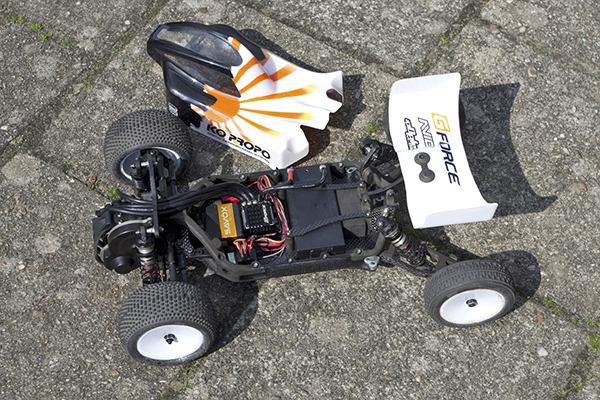Front wheel drive buggies may not be that common, but they do have a history and passionate following. ORB Racing is a small company dedicated to these unusual buggies and the design does have some merit. We got a chance to ask Paul Dijkstra of ORB Racing about the ideas, theories and racing scene of this class that you probably didn’t even know existed. Check it out.

The ORB Racing FF210 buggy is built on a combination of carbon fiber plates and laser sintered nylon 3D components. The chassis was made with lightweight, open layout in mind. This allows a wide adjustment range of the weight distribution and makes the chassis easy to work on.
RC Car Action: Most people have never seen or heard of front-wheel drive buggies, especially racers in the United States. How long have they been around?
Paul Dijkstra: The earliest examples I know of are from the late 1980s, and there was a short spike of popularity for the concept following those years. If I’m correct, they were mainly in Japan and some parts of Europe. Most cars were custom built, however some brands did enter the market with production cars (Kyosho Maxxum FF, MRC Sand Master, Nichimo Spirit FF, Nichimo Vantage). Then IFMAR banned FWD for the 2WD class somewhere around this time, because on loose, bumpy dirt tracks the cars had an unfair advantage over RWD buggies. The ban is why the concept never quite took off and possibly why not many people have heard of it.
What’s the racing scene for the FWD buggies like in your area?
It’s a niche, so even in my area it’s not big enough for a separate FWD racing class. I race my car in the 2WD class, where it is competitive, but not dominant. It seems developments in track surfaces, tires and other technology over the last 25 years have made a more level playing field for RWD and FWD.
How long have you been racing FWD buggies?
I started testing my first prototype about four years ago. For some time I tested the car in practice only and raced with a RWD; however since about two and a half years the FWD buggy is my car of choice for racing.
What are the challenges in designing a FWD buggy?
The biggest challenge is getting everything to fit up front; motor, drivetrain, shocks, steering and anti-roll bar. None of those parts can bind anywhere through the suspension travel and steering lock. Compacting that package successfully also gives room to play with the layout in terms of battery placement and weight balance.
How are handling characteristics different for FWD buggies?
The car has higher cornering speeds than RWD through low-medium speed corners; it’s because you can apply power sooner and longer with the FWD. The car does have less acceleration, however thanks to the higher cornering speed it’s not a big issue. FWD has amazing stability and means that you can push hard with fewer mistakes. In addition, bump handling is amazing and the car is less sensitive to changeable track conditions than RWD. With the weight balance and wide front tires you always have plenty of steering. On high grip surfaces (Astroturf and carpet) the aggressive front end requires some finesse, on low-medium bite the steering is confidence inspiring. Last but not least, what people are often surprised about is that the car jumps and lands just fine, no special tricks needed. The only remark is that the car is more sensitive with regard to applying the brakes mid-air.
What do you like best about FWD buggies?
I feel as if I can race more consistently and battle more closely with fellow racers. To me there’s nothing more rewarding and thrilling than that!
The post Interview: Paul Dijkstra Chats About FWD Buggies appeared first on RC Car Action.



